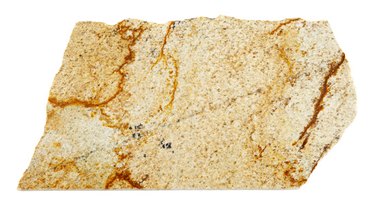
Over time, your bathroom sink may crack. In some cases, you can repair these cracks by filling them and coating the entire sink with a protective layer that will hide the crack repair. There are various reasons that your sink could crack. Understanding why this could happen will help you prevent potentially permanent damage.
Force
Video of the Day
Force is one of the most obvious causes of cracks in bathroom sinks. When you move furniture in and out of your bathroom, or if you drop a heavy tool on the sink, you can cause small or large cracks in it. Prevent this by putting padded foam or thick blankets around the sink while you are moving items in and out of the bathroom, or if there is a chance that you could drop heavy objects on the sink. If your sink is very old or if it made out of sensitive porcelain, simply dropping a hair dryer on a weak point on the sink may cause it to crack.
Video of the Day
Rust
Some manufacturers attempt to strengthen stone sinks by installing thin sheets of steel inside the sink. However, steel can rust over time. When it rusts, the steel actually swells and can cause the sink to expand and crack under the pressure of expansion. Remedy this by only purchasing stone sinks that have been reinforced with fiberglass or stainless-steel rods that will not rust.
Temperature Changes
Some sink materials, such as porcelain, are very sensitive and can crack when the temperature changes quickly. For example, if the bathroom sink is cool and you pour scalding water down the drain, it may cause a slight crack to form. If you repeat this several times, the crack could get wider and wider.
Natural Hairline Cracks
Natural stone sinks are made when molten minerals fold and harden. These folds create a grain in the stone that is natural and that many homeowners covet because it is a unique feature of natural stone sinks. Some natural stone can be weak at certain areas and can eventually create a hairline crack over time. This is not likely to happen on high-quality stone sinks, unless the sink is very old. Repair or reinforce small cracks to prevent them from getting larger.